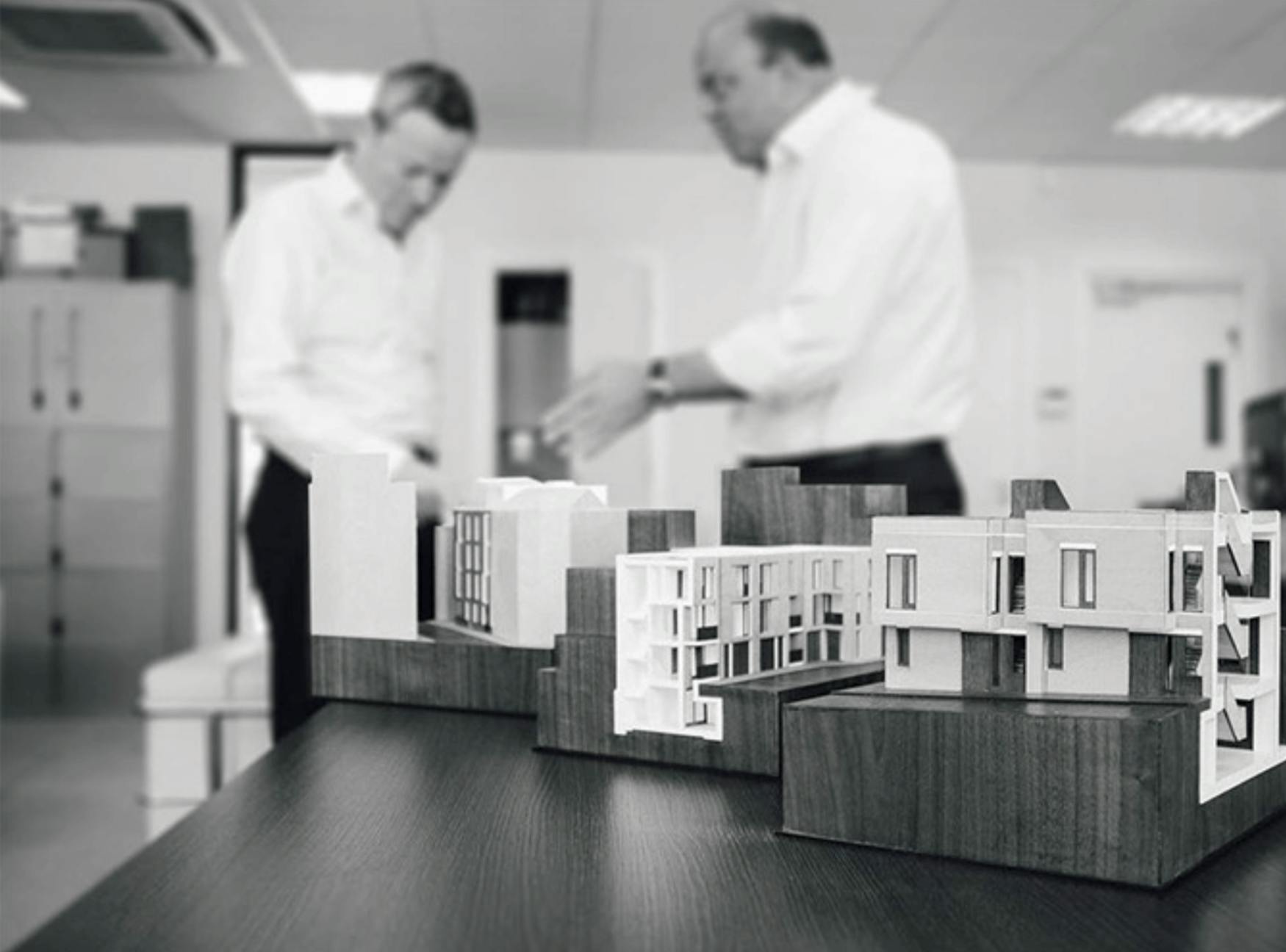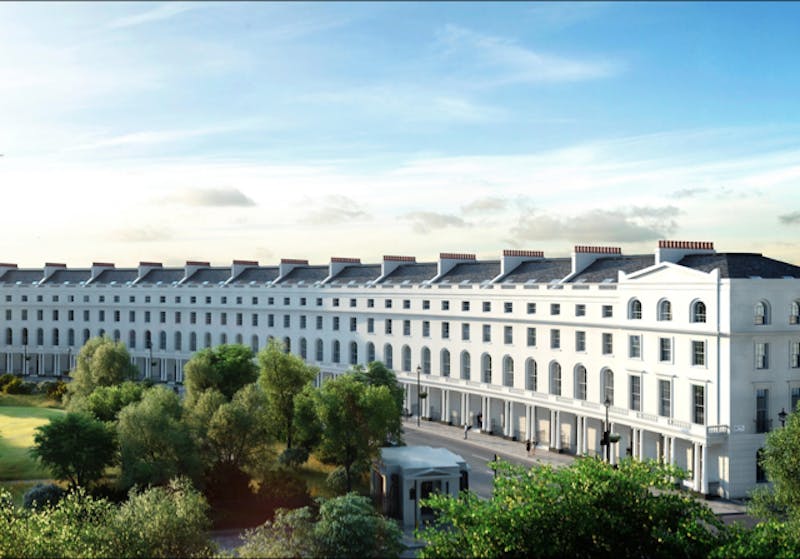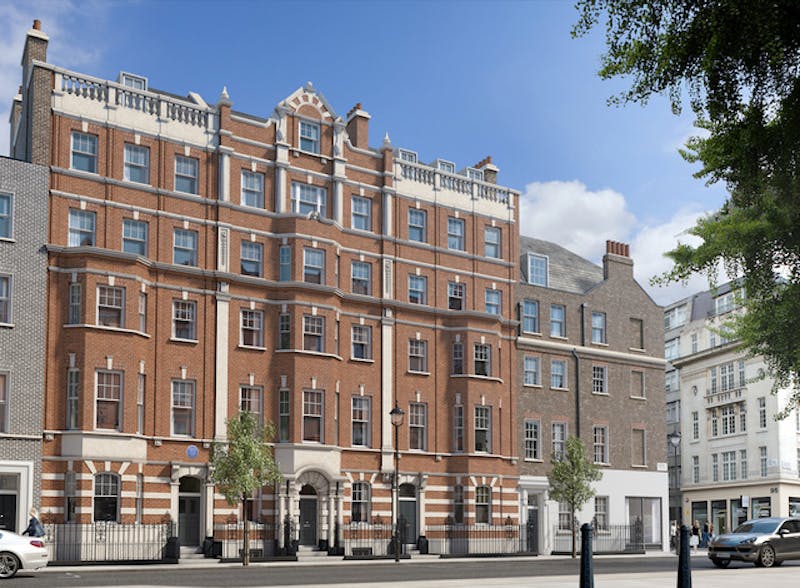Since starting their property development firm ten years ago, Grant Lipton and Dean Clifford have built Great Marlborough Estates into a key player on the capital’s prime property scene, with a firm focus on a very specific set of buyers; we find out how it all began, where they’re at, and what’s on the horizon…
Grant, you are part of a well known property family and your father (Sir Stuart, founder of Stanhope PLC) is a Non-Executive Director of Great Marlborough Estates; how does this affect your approach to the business and development in general?

Some of my earliest memories are visiting Cutlers Gardens, Stockley Park and Broadgate being built so it is fair to say that property development is in my DNA. Starting Great Marlborough Estates has allowed me to develop my own vision and the ability to explore new ideas.
It is important to have a clear vision when embarking upon development projects and to really enjoy the process. This is the same for urban design, heritage and architecture just as it is for sport and the arts.
Dean your background was as a real estate fund manager; when did you first start working with Grant, and what differing skills do you both bring to the table?

On the face of it my background as a chartered surveyor and fund manager are worlds away from where I am now. However, I have always been involved in residential property whether it be through investing in portfolios or starting funds, my passion has always been residential. My understanding of investor demands and the mechanics of financing complex projects are also essential skills for any development business.
Grant and I have known each other for many years and eventually decided to start GME about ten years ago. We balance each others passions for design on the one hand with attention to detail and construction complexities on the other. The planning process is also something that I can bang on mercilessly about when given half the chance!
GME’s target demographic is ‘real-world’ affluent people; can you elaborate on this?
When we started GME a decade ago, we identified a real gap in the market for discerning people who appreciate the attention to detail we bring to our developments. Above anything, we want our homes to be lived in by owner-occupiers and by thinking about ‘real world’ affluent people, we mean pricing homes for successful professionals at the middle and not the very top end of the prime residential market. These homes suit high achievers in the UK or abroad who want to experience the greatest city in the world – London.
You’re working with a broad range of partners ranging from Middle Eastern financial institutions to quoted UK property companies and high net worth consortiums; how would you describe the current funding climate for prime resi developers?
The global economic climate is fragile but we are fortunate to have a strong track record of delivering high-quality projects and we have good relationships with numerous funders.
The funding climate is not easy but if the project is attractive it will find the necessary investment
Despite current concerns over Brexit there are many regions in the world facing significant change, whether that be rapid economic development or political instability. In all of these places wealth preservation is high on the agenda and London is a key home for investment. The funding climate is not easy but if the project is attractive it will find the necessary investment.

You began by developing smaller townhouses – including the RIBA award-winning Bloomsbury Collection on Wakefield Street (below) and No.1 Baker’s Row in Clerkenwell – and have progressed to the £500m redevelopment of John Nash’s Park Crescent in Regent’s Park; were larger schemes always the ambition, and what other types of opportunities are you currently looking at?
When we first started GME our main intention was simply to create high quality developments in London and allow the company to grow organically as interesting opportunities arose. Little did we know that the global financial crisis was just around the corner! Whilst we have always been comfortable dealing with larger projects, it was important to build a track record which provided investors and lenders the confidence to work with us on significantly larger projects.
We have always been interested in more complicated projects and having worked on a number of Listed buildings our interest in heritage in the built environment has grown. One of our aims is to create ‘future heritage’ – buildings that reflect the fabric of London’s urban villages whether that be Marylebone, Notting Hill, Clerkenwell or Mayfair, they all need to respond to their environment. Purchasers today are searching for authenticity rather than imitation.

You spotted the potential of Regent’s Crescent (below) and are now returning it back to its original use; what first attracted you to the scheme and how are you finding the process of developing a Grade I listed asset?
There are very few opportunities to acquire an iconic piece of London and it was too good an opportunity to pass-by. One of the beautiful things about heritage development is the story behind the site and before embarking on a project of this importance we undertook a significant amount of research with our heritage advisors to ensure we fully understood the history of the site. The crescent is Grade I Listed and originally designed by John Nash, the architect of Buckingham Palace, as part of his grand masterplan of London for the Prince Regent.
We saw this as an opportunity to restore the development to Nash’s original design as closely as possible
The crescent sustained bomb damage during the war and was completely redeveloped in the 1960’s as a concrete replica that did not represent the original designs. Working with Historic England and Westminster City Council we saw this as an opportunity to restore the development to Nash’s original design as closely as possible – from the reintroduction of the entrance doors and bridges to the stucco render façade and the reintroduction of the chimneys.
There is a real sense of responsibility in developing a Grade I listed building and during the construction we also uncovered an icehouse at the rear of the site which we will be preserving and incorporating into the development.

We see you’re also in the process of redeveloping a series of late Georgian properties in Fitzrovia, and launching a new scheme in Notting Hill; are you predominately location or property-driven when it comes to the acquisition process?
The location and the property are often inextricably linked. We are opportunistic in our approach and are always looking at ways of trying to create value.
We are very excited by both of these developments, the newly completed houses at West Village in prime Notting Hill and the beautiful collection of seventeen apartments at 38 Langham Street (below) which will complete next year.

Prices in the golden postcodes have fallen significantly since their 2013/14 peak and most research houses predict another tough year in 2018; how do you see the next few years panning out for the prime markets, and to what extent do market movements and forecasts affect your plans?
The key driver behind the fall in values in prime central London is the increase in stamp duty over the period. The fundamentals of demand outstripping supply in prime areas of London prevails and we believe there will be modest price growth over the medium term. Purchasers are price sensitive and demand a good quality product.
When we undertake our feasibility appraisals we never include price inflation
When we undertake our feasibility appraisals we never include price inflation and are optimistic about the schemes we are developing. We believe the quality of our developments and their design remain in good demand.
How do you react when policymakers and commentators accuse developers of land-banking to maximise profits?
As we have previously commented in the media, accusations of land-banking are largely a misunderstanding on the politicians’ side of how the development process works. We would suggest that rigid planning laws are causing delays and legal uncertainties in the development process.
What is perceived as land-banking is in fact a rise in viability issues following soaring construction costs since the 2008 recession – up by 20% according to IMF data.
What are you finding to be the biggest challenges in delivering new homes for London?
One of the biggest obstacles is the planning system which has become outdated and no longer fit for purpose. Planning departments are under resourced and face ever changing political pressures. Affordable housing continues to be the big social issue that is not being properly resolved.
What’s the best piece of advice you’ve ever been given?
Do your homework, developers hate surprises!



